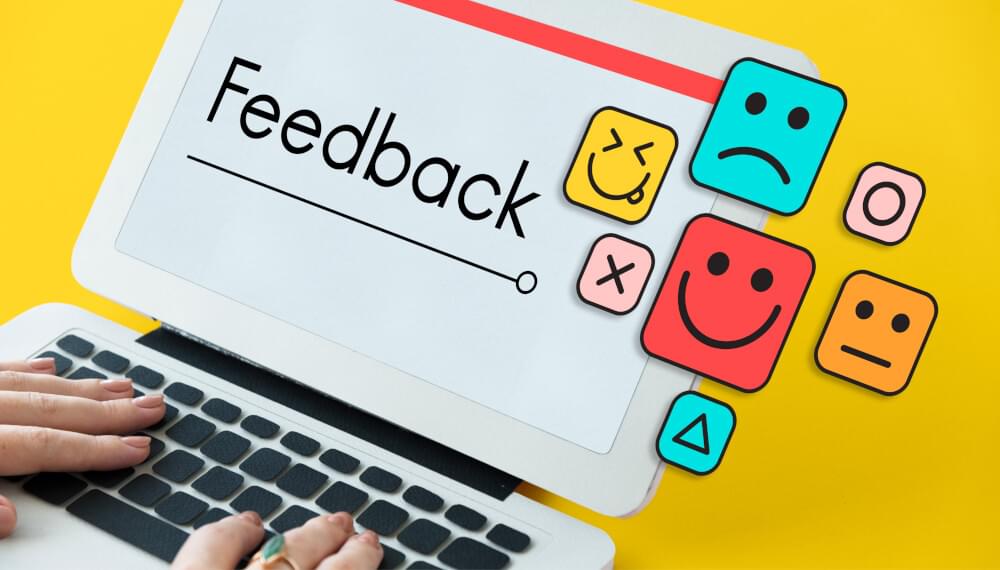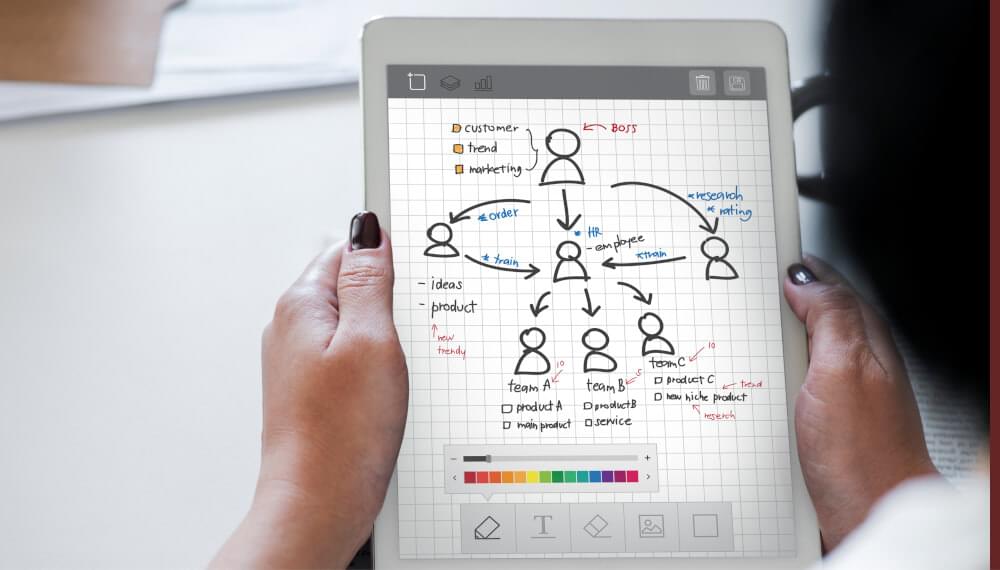
Top Customer Retention Solutions for Software Development
16 mins readSep 4, 2023

With each day, new opportunities arise in the software industry. But how do you stand out? How do you make sure your customers stick around? The answers lie in terms like customer acquisition, customer onboarding, and customer analytics. These aren’t just words they’re the pillars of a robust customer retention strategy.
One fundamental challenge that software development companies face is customer churn rate! It’s the count of how many users are leaving and why. Ever thought about what keeps customers engaged? Or how to bring back those who’ve drifted away? It’s all about the customer reactivation rate.
But that’s not all. There’s a customer lifetime value (CLV) calculation that tells you how much each customer is worth. And don’t forget the importance of customer satisfaction (CSAT) surveys. Ever wondered how these surveys can assist you? They help you tap into your customers’ minds, understand their needs, and improve your product. Have you ever tried an AI-based, well-equipped customer retention software to reduce churn and retain customers?
This all was just a preview!
We’ll highlight the importance of customer retention software, explore the connections between customer acquisition, onboarding, and analytics, and explore strategies to help your business reach new heights.
Happy reading!
The Crucial Dynamics of Customer Retention in Software Businesses

For software businesses, maintaining a solid customer base is not just a goal but a survival imperative. Concepts like the customer churn rate, customer reactivation rate, and customer lifetime value (CLV) calculation hold the central position for customer retention. These factors wield immense influence over a company’s success and warrant a comprehensive understanding.
What is the Customer Churn Rate?
Customer churn rate is the percentage of customers who discontinue their subscription or use a service within a given time frame. This metric is a basic test of customer satisfaction and overall business health for software businesses. A high churn rate indicates that customers are leaving faster than new ones are joining.
Impacts of Customer Churn Rate
The impact of a high churn rate on software businesses is quite dire. Acquiring new customers can cost five times more than retaining existing ones. High churn leads to revenue loss and damages a brand’s reputation. According to studies, increasing customer retention rates by a mere 5% can boost profits by 25% to 95%. These figures highlight the importance of acquiring customers and keeping them engaged and satisfied.
Reviving Customer Relationships with Reactivation
Customer reactivation rate refers to the percentage of former customers who re-engage with your software after a certain period of inactivity. Reactivation can be of great luck for businesses. Reengaging past customers is more cost-effective than acquiring new ones, and reactivated customers might even become advocates for your software.
Effective customer reactivation breathes life into dead relationships, reawakening their previous interest and familiarity. Applying personalized re-engagement campaigns, offering incentives, or highlighting new features via customer retention software can restore their enthusiasm, boosting your product’s value proposition.
The Importance of Customer Lifetime Value (CLV)
Customer lifetime value (CLV) calculation is a pivotal metric that predicts the net profit attributed to a customer’s future relationship. This metric considers the initial purchase and the upsells, cross-sells, and repeat purchases over their entire customer journey.
Insights from Customer Satisfaction Surveys and Feedback Analysis

Customer satisfaction (CSAT) surveys and customer feedback analysis emerge as valuable tools to improve customer retention strategies. These methods provide actionable insights into what’s working and what needs improvement. Using a customer retention software, you can regularly track customer sentiment, swiftly identify pain points, and rectify them.
For instance, if a software business notices a drop in CSAT scores after a new update, it can proactively address issues and provide solutions. Customer feedback analysis can show recurring problems, helping prioritize improvements.
Employing customer satisfaction surveys and feedback analysis can be a foundation for optimizing customer loyalty programs, refining customer engagement strategies, enhancing the customer onboarding process, and even guiding the evolution of the software itself.
Enhance Customer Retention Strategies through CSAT Surveys and Feedback Analysis
For customer retention, the stakes are high due to the cost of acquiring new customers. Utilizing tools like customer satisfaction (CSAT) surveys and customer feedback analysis can transform software businesses. These methods play a significant role in anticipating customer needs, improving products, and boosting overall satisfaction.
Know Your Customer Needs and Concerns with CSAT Surveys
Customer satisfaction surveys provide a direct line to understanding customer needs and concerns. They offer a structured platform for clients to voice their opinions, preferences, and grievances, critical in shaping software tools that resonate with the audience.
According to research, 80% of companies that deliver best-in-class customer experiences use customer feedback and insights. This underscores the role of CSAT surveys as a valuable tool for software companies aiming to stay ahead of the curve.
Methods for Effective CSAT Surveys and Actionable Feedback Gathering
Conducting CSAT surveys requires a careful approach. The surveys should be concise, relevant, and timed appropriately. Avoid survey fatigue by targeting key touchpoints in the customer journey, such as after onboarding or following a support interaction.
Additionally, employing Net Promoter Score (NPS) surveys can assess customer loyalty and predict churn. This can help tackle customer churn rate and reactivation rate effectively.
To gather actionable feedback, employ open-ended questions encouraging customers to articulate their experiences. This qualitative data can show you insights that quantitative metrics might miss. For instance, if a software business notices a recurring dissatisfaction with a particular feature, it can prioritize its improvement.
Elevating Software Retention Tools with Customer Feedback Analysis
Customer feedback analysis connects raw data with informed decision-making. It’s a dynamic process that goes beyond reading comments it involves mining for patterns and trends that point to both strengths and areas for improvement.
Addressing pain points is of immense importance. 91% of customers unhappy with a brand will simply leave without complaining. A well-equipped customer retention software can identify and address these issues through feedback analysis, help retain customers, and enhance their CLV calculation.
For example, a software company analyzing feedback might discover that users are struggling with a particular step in the onboarding process. By rectifying this issue, they can foster better engagement, increasing customer satisfaction and retention.
What is the Role of Customer Onboarding?

The customer onboarding process is the software user’s first impression, setting the tone for their entire journey. Studies have shown that 60% of customers will decide whether to continue using a product or service within the first few days of their experience. A well-designed onboarding process reduces the customer churn rate and influences the customer reactivation rate, as it can dictate whether customers find value in your software.
6 Tips for an Effective Onboarding Process
Creating an onboarding process that engages customers and reduces churn requires careful planning and execution. Here are some tips:
- Personalization: Design the onboarding experience especially for your customers based on their needs and preferences.
- Simplicity: Keep the process simple and intuitive to prevent overwhelming new users.
- Guidance: Provide step-by-step guidance to help customers understand how to use your software effectively.
- Value Showcase: Highlight the key features that solve the customer’s pain points and demonstrate the value your software offers.
- Interactivity: Incorporate interactive elements like tutorials or walkthroughs to engage users actively.
- Timely Support: Offer easily accessible customer support during the onboarding phase to address any concerns promptly.
Customer Engagement Strategies Across the Customer Lifecycle
Effective engagement strategies extend beyond onboarding, encompassing the entire customer lifecycle.
Here are some strategies:
- Regular Communication: Keep customers informed about updates, new features, and relevant content.
- Personalized Recommendations: Utilize customer data analytics to offer personalized recommendations that align with their interests.
- Segmented Outreach: Use customer segmentation to design marketing messages and offers to specific customer groups.
- Feedback Loop: Continuously gather feedback through CSAT surveys and customer feedback analysis and implement insights-based improvements.
- Customer Journey Mapping: Map out the customer journey to identify touchpoints where engagement can be enhanced.
- Loyalty Programs: Implement customer loyalty programs that incentivize customers to remain loyal and refer others.
From Customer Onboarding to Long-term Satisfaction
From onboarding to long-term satisfaction is a complex but important pathway in customer retention. Sustaining customer engagement over the long term depends on maintaining a commitment to customer satisfaction. You can use customer retention software to gather customer concerns, refine products based on feedback, and continually improve engagement strategies. In no time, you can increase customer lifetime value (CLV) and create a virtuous cycle of customer retention and growth.
What is the Power of Customer Data Analytics and Segmentation for Retention?
Undoubtedly, data is the cornerstone that holds the strategies together. Let’s delve into how customer data analytics and segmentation drive businesses to understand user behavior, enhance targeted efforts, and guide interventions at crucial junctures.
Identifying User Behavior and Preferences with Data Analytics
Customer data analytics is loaded with valuable insights for you. By examining patterns and trends in user interactions, businesses can gain a deeper understanding of their customers’ behavior and preferences. This holds great value in crafting strategies that resonate with the audience.
Studies suggest that businesses using data analytics are 23 times more likely to acquire customers, six times more likely to retain those customers, and 19 times more likely to be profitable. This showcases the impact data analytics can have on customer churn rate and lifetime value (CLV) calculation.
Targeted Efforts with Customer Segmentation
Customer segmentation takes data analytics to the next level by dividing the customer base into distinct groups based on shared characteristics. This process enables businesses to create targeted retention efforts that resonate with specific segments. It’s not a one-size-fits-all approach instead, it’s a tailored strategy that addresses various customer groups’ unique needs and preferences.
For example, a software company might segment its users into categories like “freemium users,” “power users,” and “enterprise clients.” Each segment might require different engagement tactics and communication strategies to meet their needs.
Tools and Techniques for Effective Data Analysis and Segmentation
To utilize the potential of data analytics and segmentation, you can utilize a range of tools and techniques:
- Data Analytics Platforms: Tools like Google Analytics, Mixpanel, or Adobe Analytics help track user interactions and generate actionable insights.
- CRM Software: Customer Relationship Management (CRM) systems store valuable customer data, helping in segmentation and personalized engagement.
- Machine Learning: Advanced techniques like machine learning can uncover intricate patterns in large datasets, leading to more accurate segmentation.
- Survey Tools: Platforms like SurveyMonkey enable the collection of targeted feedback, further refining segmentation.
How to Enhance Customer Experiences through Effective Customer Journey Mapping?

The integration of customer journey mapping is beneficial to retain customers. Here, we dive into how customer journey mapping enhances retention efforts and provide a step-by-step guide to creating a map tailored explicitly for software development tools.
What does Customer Journey Mapping Mean?
Customer journey mapping is a visual representation of a customer’s entire experience with a product or service. It captures every touchpoint and interaction, from the initial discovery to post-purchase engagement. This strategic tool brings insights into the customer’s emotions, needs, and expectations at each stage, which is pivotal in enhancing user experiences and retention efforts.
See how this process impacts metrics such as customer churn and reactivation rates.
Step-by-Step Guide to Creating a Customer Journey Map for Software Development Tools
Define Personas: Identify distinct user personas who engage with your software. These personas represent various user groups with unique goals and pain points.
Map Touchpoints: Plot out every touchpoint users have with your software, from the first interaction to ongoing engagement. This includes website visits, app downloads, onboarding experiences, support interactions, and more.
Capture Emotions: Understand how users might feel at each touchpoint. Are they excited during the initial discovery, frustrated during technical hiccups, or satisfied with the support received?
Identify Pain Points: Analyze the journey for pain points—areas where users might face difficulties or experience dissatisfaction. These pain points often become the focal points for improvement efforts.
Highlight Opportunities: Recognize opportunities to enhance the user experience. This might involve adding new features, simplifying complex processes, or providing proactive support.
Implement Solutions: Using pain points and opportunities, devise solutions that reduce frustrations and enhance satisfaction. These solutions should be specially made for each stage of the journey.
Identifying Pain Points and Enhancing User Experience
Customer journey mapping is a potent tool for identifying pain points that can cause customer churn. Research indicates that 88% of organizations with improved customer journeys see increased customer satisfaction. Customer retention software can help you understand the difficulties or dissatisfaction encountered by your customers thus, can strategically focus your efforts on addressing those issues.
For instance, if the journey map reveals that users need clearer instructions during onboarding, the company can refine its onboarding materials, offer video tutorials, or implement interactive guides. This enhances the customer lifetime value (CLV) calculation by creating a smoother user experience that encourages continued engagement.
Let’s Wrap!
In this blog, we have discussed critical metrics such as the customer churn rate, which focuses on the urgency of retaining customers. Customer satisfaction (CSAT) surveys and customer feedback analysis emerged as super useful tools for understanding and satisfying user needs. The undeniable economic impact of customer reactivation rate and customer lifetime value (CLV) calculation demonstrated the tangible benefits of forming deep customer relationships.
It’s imperative to recognize that these strategies don’t exist in isolation. Software development companies can forge deeper connections with their user base by embracing customer engagement strategies, establishing customer loyalty programs, and utilizing customer retention software.

